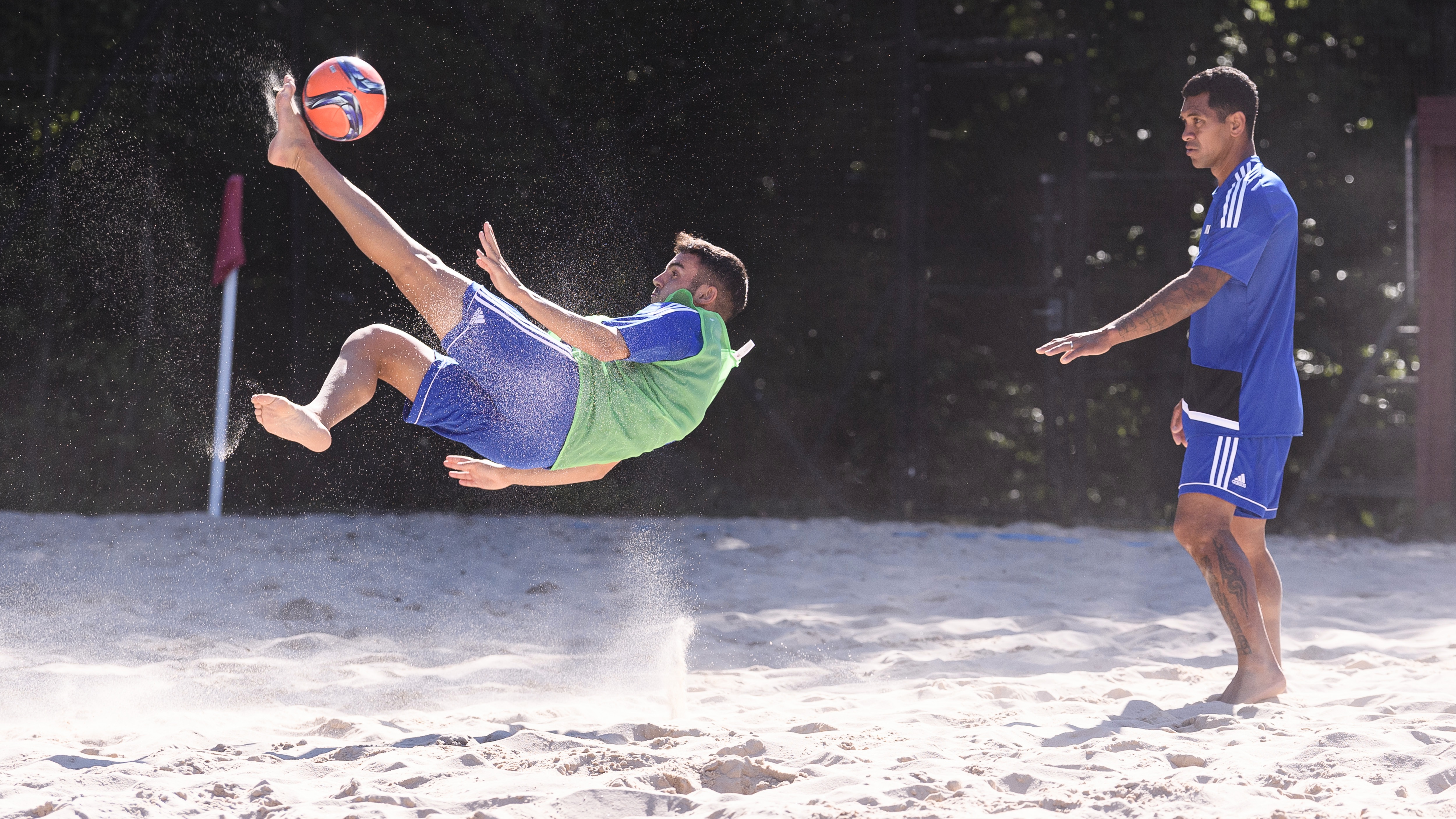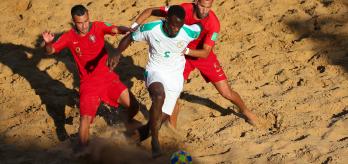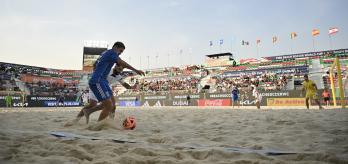After two rounds of games at FIFA Beach Soccer World Cup UAE 2024™, 15 goals have been scored by bicycle kick. For the first time, FIFA’s Football Performance Insights team is collecting match data on beach soccer and after the first 16 games there have been 245 attempts at goal by bicycle kick, with 31 on target. 29 of them were attempted with the first touch. This acrobatic technique requires explosive athleticism, speed, accuracy and power, and when they are successful, they are so much fun to watch.
Dejan Stanković is renowned for his goal-scoring ability and with a total of 47 World Cup goals chalked to date, he is currently ranked second in the all-time beach soccer goal-scoring charts. The Switzerland forward is part of FIFA’s Technical Study Group (TSG) for this tournament and is renowned for scoring using this technique. Here, Stanković explains the different types of bicycle kick, using some of the goals scored in Dubai as demonstrations.
The classic bicycle kick
The classic bicycle kick sees the player take one touch to control the ball and prepare for the kick. An example of this type was the goal scored by Tahiti’s Heirauarii Salem (9) in the Oceanian side’s group stage match against Argentina.
“In this one, we see he [Salem] is left unmarked following a press on his goalkeeper, so he has time and space to prepare the ball with one touch. This is the classic one. He knew where he was in relation to the opposition goal and had the ideal body shape when receiving, giving him the time to execute the bicycle kick with precision,” Stanković explains.
Another example of the classic bicycle kick is seen in the technique used by Iran’s Reza Amiri (3) for his goal against Spain.
“This is a special goal and is beautifully executed, especially considering the context of it being the winning goal in extra time. Amiri makes it look easy, but this is not simple especially after playing 36 minutes plus extra-time. To finish with such a precise right-foot over right shoulder technique, and with such power and accuracy at that late stage in the game makes this a world-class strike.”
Preparing for the right moment
The bicycle kick is a protected action. This means opposition players cannot challenge the player involved in the attacking action once this player has the ball under control. Sometimes the player needs more than one touch to tee up the bicycle kick action, prolonging the period where the player is protected. Using Amiri’s goal (IRN) against Argentina, Stanković explains these dynamics in more detail.
“In this example, it is different because he must take a number of touches to control the ball. We can see in Clip 3 below that he has the ball under control so he knows the defender cannot challenge him and can only attempt a defensive block. He chests the ball when he receives it to take it under control, then takes a second and third touch to find the right the moment to execute the kick. This is another nice example of a right foot over right shoulder technique.”
Creating space to receive from a set play
In a set play situation, an attacking player must create space to be able to make an attempt at goal from a bicycle kick. According to Stanković, only one or two seconds are needed to get the ball under control once it is received.
“From a set play, it is very important to create some space. In Clip 4 below, we see a great example of how to do this in the lead up to Abdulla Abbas’s (9) goal for the UAE in their group stage match against USA. He is well-marked with one defending player in front of him and one behind him. He makes a sharp movement to his right, taking the defender in front of him with him. His explosive movement back towards the thrower creates the space for him to receive the ball unopposed. He then takes his first touch on his chest to control the ball before striking it clean.”
Striking over opposite shoulder
When executing a bicycle kick, most players prefer making contact with the ball by bringing their striking foot over their corresponding shoulder (i.e. right foot over right shoulder). Some players can perform these types of kicks with both feet.
However, the technique where players make contact with the ball by bringing their striking foot over their opposite shoulder is notoriously difficult to execute. Although goals using this technique are seldom, Belarus forward Ihar Bryshtsel (8) treated the competition with a prime example of this type of finish in his side’s 3-1 win over Japan.
As Stanković explains, “There are not many players who can do this. In my mind there are only two players who can do this, Bryshtsel and my team-mate, Glen Hodel from Switzerland. This technique makes it very difficult for the defender to predict where he will go, or to try to block it. Players who are one foot dominant are predictable, but Bryshtsel is not. He can kick from left foot over right shoulder and right foot over left, which is rare. This is a fantastic goal.”
SUMMARY
The bicycle kick is an explosive action that requires a lot of practice to perfect. These kicks can be executed in a variety of ways, requiring athleticism, control, timing, accuracy and power. Goals scored using this technique thrill spectators and they continue to be a key driver of the excitement of beach soccer.
For more information on how to practise bycycle kicks visit our dedicated training session below, conducted by Spanish beach soccer legend Ramiro Amarelle.










